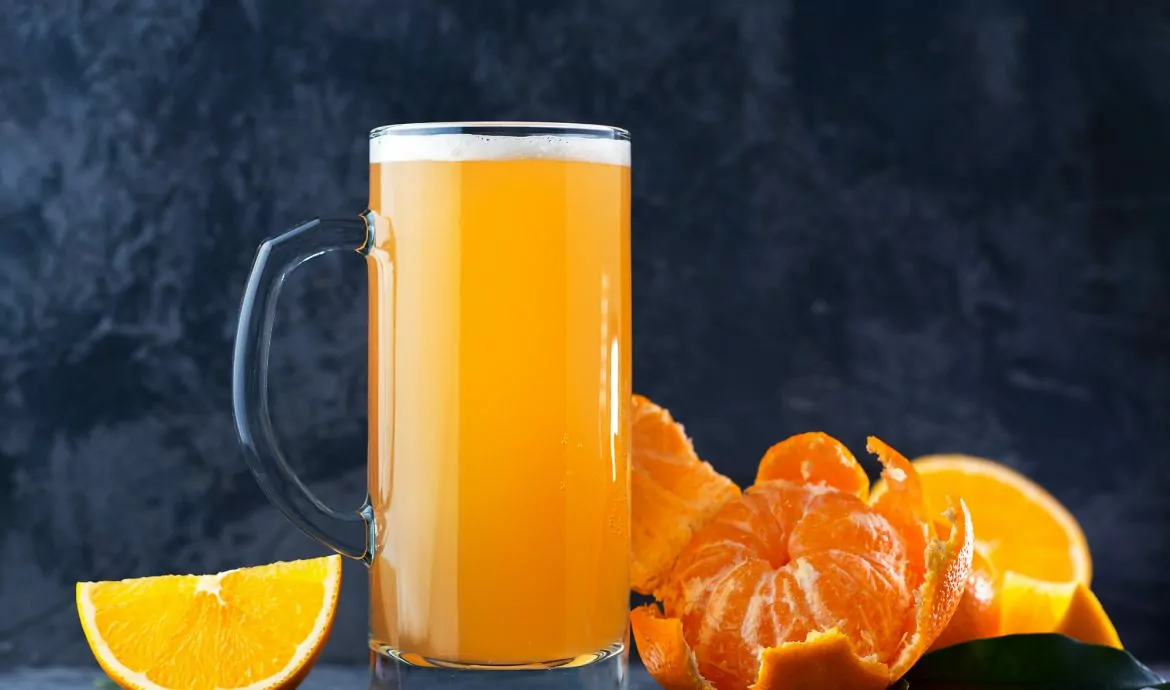How to make the best sour beers with fruit puree

Long before pasteurization and sterilization were discovered, wild bacteria were used to give brews a tart flavor. That is why the best sour beers are considered the oldest in history. From the traditional Belgian and German brews to signature fruit lambics, there is a wide range of styles, aromas, and flavors.
But one of the predominant ingredients among sours is fruit in the form of fresh pieces, juice, or puree. Most fruits are naturally acidic, an important attribute of sour beers. Although you can incorporate fruit in any lager or ale, their flavor will flourish in this type of brew. So, what sets them apart from other styles? Let’s find out.
Where does the taste of the best sour beers come from?
Bacteria
The intentional incorporation of this element brings strong notes to the mix. Today, there are two types of bacteria:
- Lactobacillus: It turns sugars into lactic acid, which creates a tart and crisp flavor.
- Pediococcus: It metabolizes without oxygen and produces intense flavors and aromas.
Wild yeast
The best sour beers use Brettanomyces (See also: Beer Festivals ), also known as “Brett”, to get an earthy or musty flavor. Some also incorporate juice or fruit puree during the aging process to contribute microbes which are naturally present on the product (WebstaurantStore, n.d.).
ABV content
The sugar in the fruit will turn into alcohol, but will not increase the alcohol by volume (ABV). Brewers use water to balance the beer. Generally, ABV ranges between 3 to 5 percent, but you can find a lower or higher alcohol content on the market.
Brewing conditions
Other types of beers are usually brewed in sterile environments. However, for the best sour beers, when it comes to wild yeast and bacteria, the more the merrier. That’s why most sours’ brewers cool off their wort outdoors and age it in wooden tanks to welcome microorganisms.

How to make the best sour beers
Although there are several styles, here are the basics for creating the best sour beers with a refreshing touch of fruit puree.
The grains
Wheat and barley are the most common ingredients among all sour beers. Depending on the style, you will use malted or unmalted grains or a mix of both.
The hops
In this case, they are not here to bring bitterness, flavor, or aroma. A small number of aged hops stop microorganisms from growing at this early stage of the process, thanks to their antibacterial properties.
The wort
Most brewers use a coolship to cool the wort overnight. This container is left open on purpose, so that it can absorb yeast and bacteria from the air. Then, the beer is transferred to a wooden barrel, where more microscopic critters thrive to ferment.
Fermentation
This is where you add the yeast and bacteria. You can do that in different stages of the fermentation process to get distinct results. Depending on the level of sourness you are looking for, the process could last 3 to 24 months.
Fruit
Fruit puree is added while the mixture is aging. By incorporating it at this moment, you will get a stronger fruity flavor, balance the acidity, and initiate the secondary fermentation. For sours – unlike other fruit beers where you can add the fruit at any time – you need to do it at this stage of the process. Otherwise, the tart characteristic could be affected.
Second fermentation
With the presence of fruit, any live microbes will ferment the sugars. It is best to toss in some fresh yeast to avoid any off flavors. This process will typically take 2 to 4 weeks. And after fermentation is completed you should allow the beer to age a bit longer, between 4-8 weeks at least.
Beer festivals around the world feature sours for you to try. Explore this endless world of flavor, aroma, and texture and go on a beer tasting to sharpen your senses. Perhaps even learn how to create your own best sour beers.
References
DR. LAMBIC. (FEBRUARY 22, 2017). A GUIDE TO BLENDING SOUR BEER WITH FRUIT. SOUR BEER BLOG.
RETRIEVED FROM HERE
FULMER, N. (N.D.) EVERYTHING YOU NEED TO KNOW ABOUT SOUR BEER. WEBSTAURANTSTORE.
RETRIEVED FROM HERE
HINES, N. (JULY 21, 2017). SOUR BEER, EXPLAINED. VINEPAIR.
RETRIEVED FROM HERE
WILMES, T. (OCTOBER 31, 2016). THE SOUR BEER SPECTRUM. CRAFT BEER & BREWING.
RETRIEVED FROM HERE
















